15 American Places That Became Famous Because Of A Sign
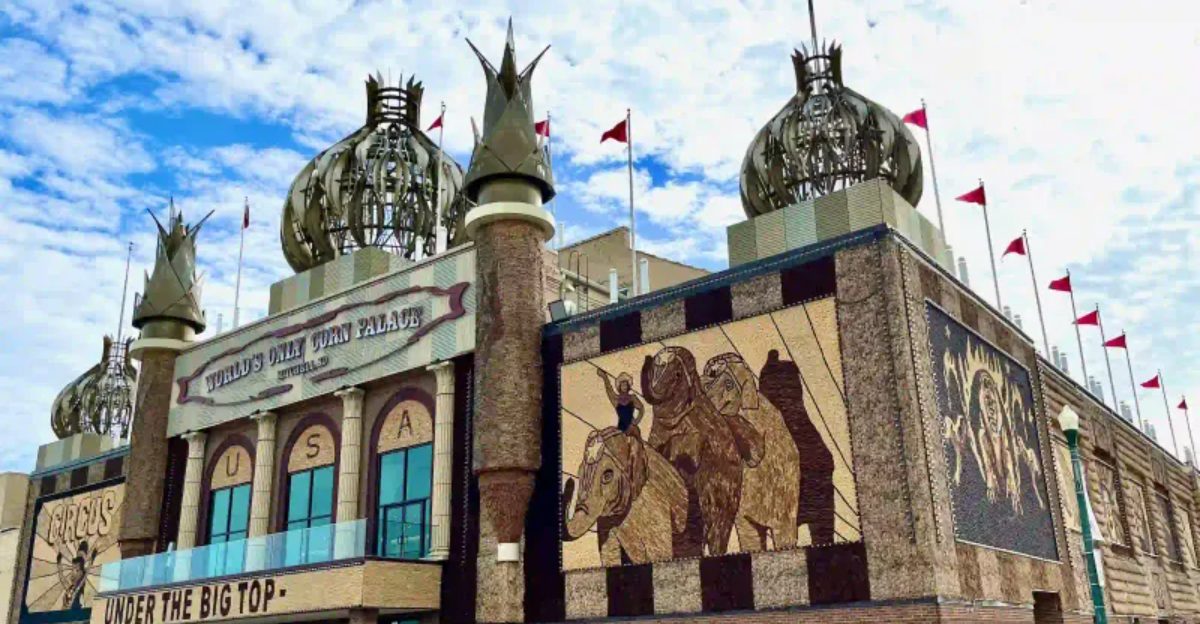
Sometimes, it’s not the place itself—but the sign that makes it legendary. Across America, a handful of simple words on weathered boards or glowing neon have turned everyday spots into cultural icons.
These signs don’t just mark locations—they spark road trips, selfies, and stories.
From kitschy roadside wonders to symbols etched into pop culture, here are 15 unforgettable places where the sign became the destination.
1. Hollywood Sign – Los Angeles, California
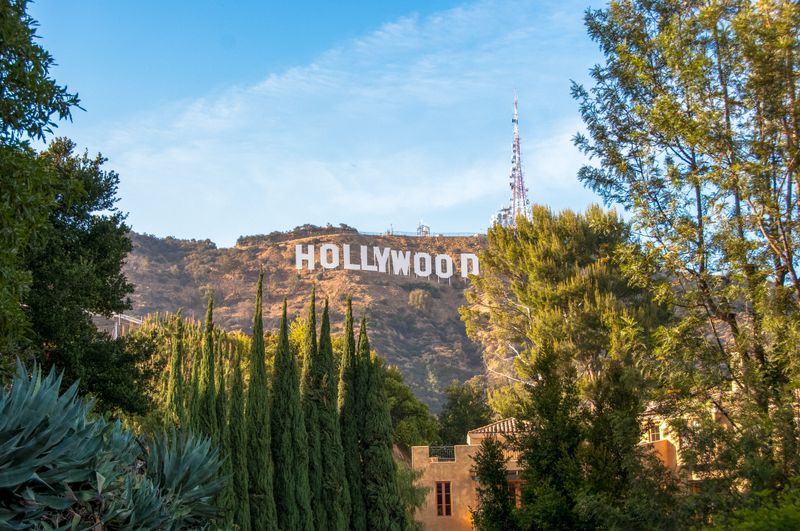
High above the bustling streets of Los Angeles stands America’s most recognizable entertainment symbol. Originally erected in 1923 as “Hollywoodland” to advertise a real estate development, this massive white sign has become synonymous with dreams and stardom.
When the sign fell into disrepair during the 1970s, celebrities like Hugh Hefner helped fund its restoration. Today, the 45-foot-tall letters attract countless tourists who hike through Griffith Park for the perfect photo.
Security cameras and fences now protect the landmark from vandalism, but that hasn’t stopped its global fame. Movies, TV shows, and social media have made this hillside marker the ultimate symbol of American entertainment industry ambition.
2. Welcome to Fabulous Las Vegas Sign – Nevada
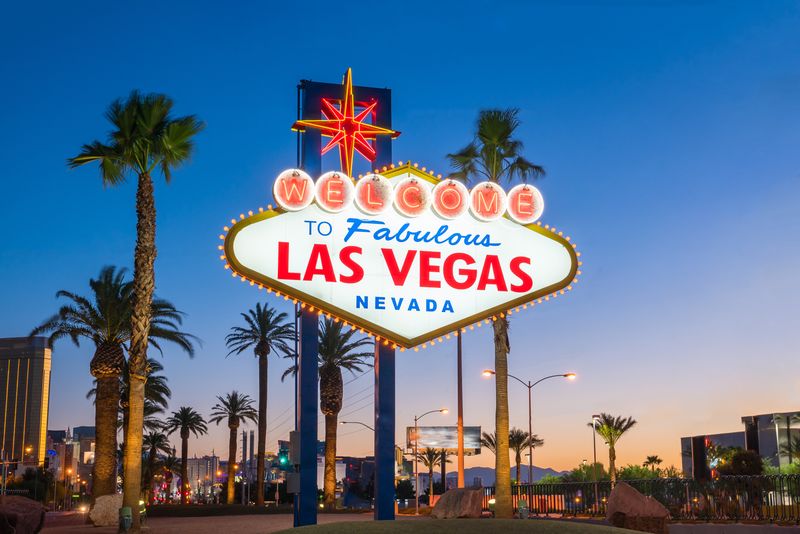
Since 1959, this dazzling neon beacon has greeted millions of visitors entering Sin City. Betty Willis designed the diamond-shaped sign as a gift to the city, never copyrighting her creation so it could be used freely.
Standing 25 feet tall with brilliant colors and flashing lights, the sign perfectly captures Vegas’s over-the-top personality. Tourists line up daily to pose beneath its welcoming message, making it one of the most photographed landmarks in America.
What makes this sign special is its timeless design that has remained virtually unchanged for decades. While Las Vegas has transformed around it, this classic marker continues to embody the city’s promise of excitement and fortune.
3. Wall Drug Store Sign – Wall, South Dakota

During the Great Depression, Ted Hustead had a brilliant marketing idea that would change his small-town pharmacy forever. He started offering free ice water to travelers crossing the hot South Dakota plains, advertising this service on roadside signs.
What began as a simple survival strategy grew into a marketing phenomenon. Today, Wall Drug signs appear on highways across America and even internationally, creating curiosity about this remote prairie stop.
The quirky advertisements promise everything from free ice water to 5-cent coffee, drawing over two million visitors annually to a town of just 800 people. This proves how creative signage can transform any business into a destination worth visiting.
4. South of the Border Sign – Dillon, South Carolina
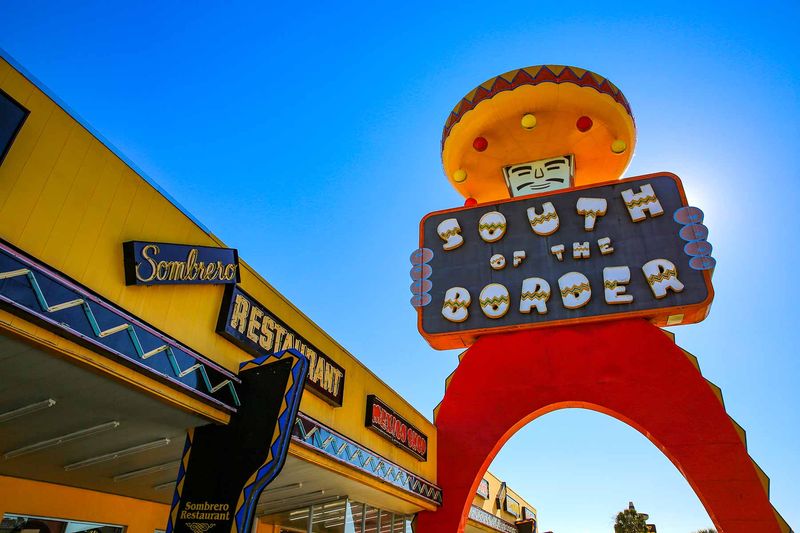
Pedro’s cheerful face has been beckoning travelers along I-95 for decades through hundreds of billboard advertisements. This Mexican-themed roadside attraction began in 1950 when Alan Schafer opened a beer stand near the North Carolina border.
The business exploded in popularity thanks to clever, pun-filled signs scattered across several states. Messages like “Pedro’s Weather Report: Chili Today, Hot Tamale” create anticipation miles before arrival.
Though some consider it kitschy, South of the Border proves that persistent, humorous advertising can create lasting success. The attraction now includes restaurants, shops, and even an observation tower, all built on the foundation of memorable roadside signage that refuses to be ignored.
5. Route 66 Begin Sign – Chicago, Illinois
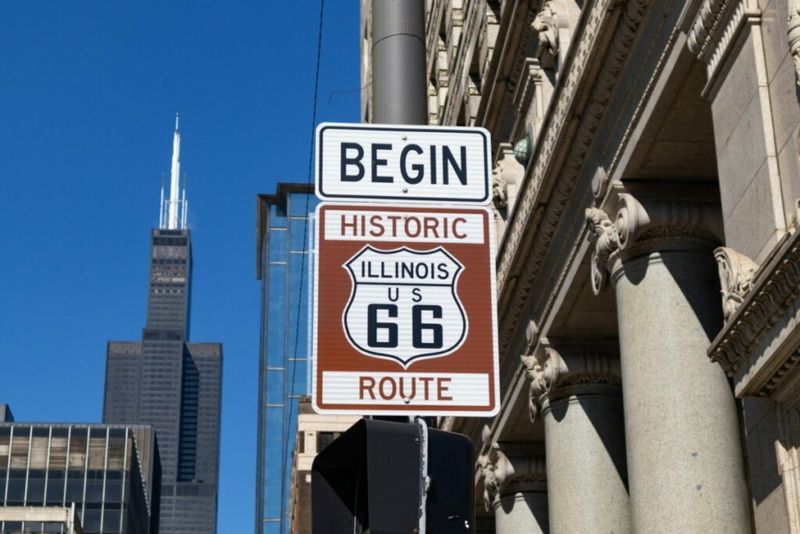
At the corner of Adams Street and Michigan Avenue in Chicago stands the official starting point of America’s most famous highway. This simple brown sign marks the beginning of the legendary “Mother Road” that stretches 2,448 miles to Santa Monica.
Route 66 became a symbol of freedom and adventure, inspiring countless road trips and cultural references. The highway connected small towns across eight states, bringing prosperity to communities along its path.
Though the interstate system replaced much of the original route, this Chicago sign remains a pilgrimage site for travelers. People from around the world visit to photograph themselves at the start of America’s most romantic highway, keeping the spirit of the open road alive.
6. London Bridge Sign – Lake Havasu City, Arizona
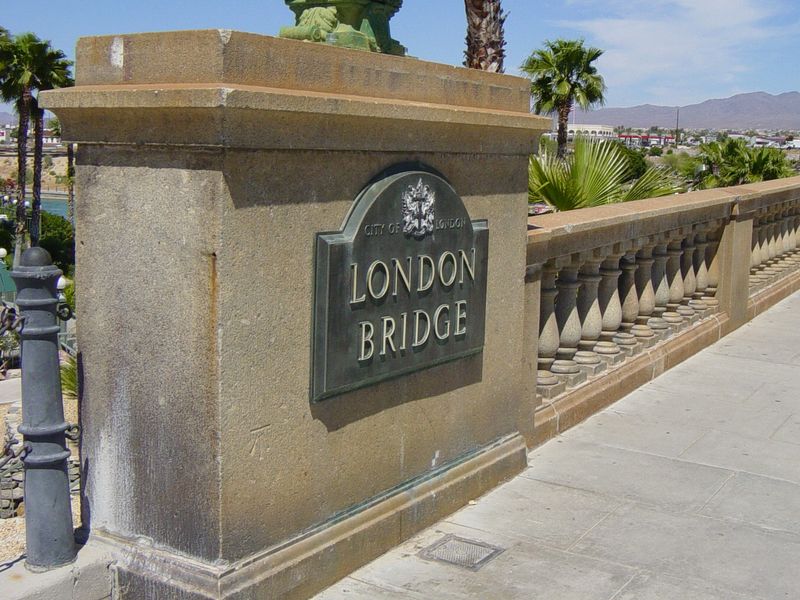
When London decided to replace its famous bridge in 1968, entrepreneur Robert McCulloch bought the entire structure for $2.46 million. He transported every stone to the Arizona desert, creating an unlikely tourist attraction that put Lake Havasu City on the map.
The bridge’s relocation sign tells an incredible story of American ingenuity and marketing genius. McCulloch knew that bringing a piece of English history to the desert would attract visitors to his planned community.
Today, this transplanted landmark draws over a million tourists annually to what was once just empty desert. The bridge and its accompanying signs prove that sometimes the most unexpected combinations create the most memorable destinations in American travel.
7. Four Corners Monument Sign – Utah/Colorado/Arizona/New Mexico

Where else in America can you stand in four states simultaneously? This unique geographical marker has become a must-visit destination for travelers seeking an unusual photo opportunity and bragging rights.
The bronze disk embedded in the ground marks the only point where four U.S. states meet. Surrounding signs explain the historical significance and surveying techniques used to establish this precise location in the American Southwest.
Managed by the Navajo Nation, the monument attracts thousands of visitors who want to experience this one-of-a-kind location. The simple sign and marker have transformed an arbitrary surveyor’s point into a destination that represents the unique geography and history of the American West.
8. Stuckey’s Pecan Shoppe Signs – Throughout the Southeast
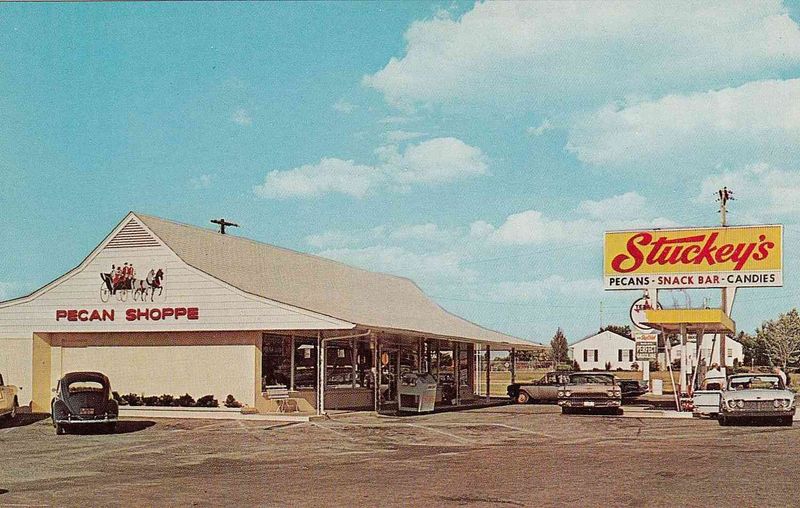
Sylvester Stuckey started selling pecans from a roadside stand in Georgia during the 1930s. His distinctive turquoise and white signs became synonymous with Southern road trips, promising fresh pecans and clean restrooms to weary travelers.
At its peak, over 350 Stuckey’s locations dotted highways across the Southeast. The consistent signage created brand recognition that made every location feel familiar and trustworthy to interstate travelers.
Though fewer locations exist today, original Stuckey’s signs remain beloved symbols of classic American road trip culture. These markers represent an era when family-owned businesses could build nationwide recognition through simple, consistent roadside advertising that promised quality and hospitality.
9. Dinosaur National Monument Sign – Colorado/Utah Border
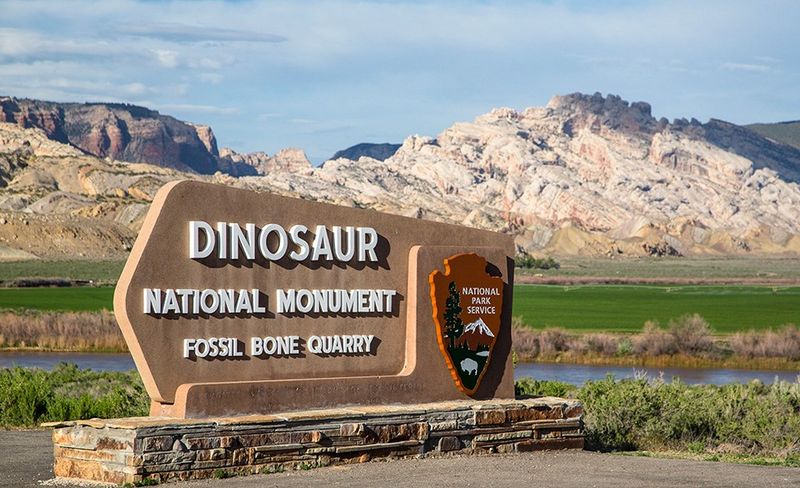
Few signs promise adventure quite like the entrance marker to Dinosaur National Monument. This remote location straddles the Colorado-Utah border, where some of the world’s most important fossil discoveries have been made.
The monument’s signs guide visitors to actual dinosaur bones still embedded in ancient rock formations. Rangers lead tours through the Fossil Discovery Trail, where you can touch 150-million-year-old dinosaur remains.
What started as a paleontological research site has become a family destination thanks to effective signage that makes prehistoric science accessible. The monument proves that educational signs can transform scientific discoveries into exciting adventures that inspire the next generation of explorers and scientists.
10. Cadillac Ranch Sign – Amarillo, Texas
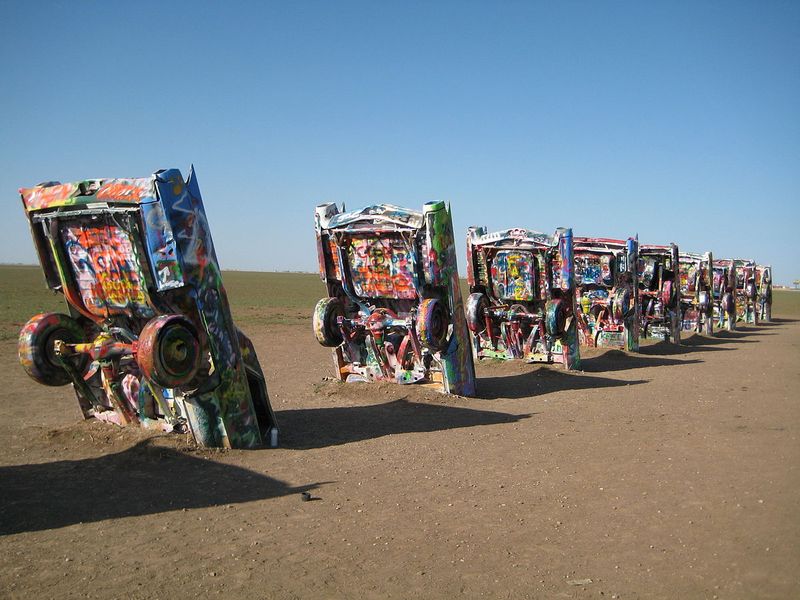
Along Interstate 40 near Amarillo, a simple sign directs visitors to one of America’s most unusual art installations. Ten vintage Cadillacs buried nose-first in a wheat field create a surreal roadside spectacle that has attracted millions of visitors.
Created by the art group Ant Farm in 1974, this installation was designed to represent the evolution of the Cadillac tail fin. Visitors are encouraged to bring spray paint and add their own artistic contributions to the colorful cars.
The accompanying signage explains the artistic vision while encouraging participation. This interactive approach has made Cadillac Ranch a constantly evolving artwork where the sign serves as both information and invitation to become part of the creative process.
11. World’s Largest Ball of Twine Sign – Cawker City, Kansas
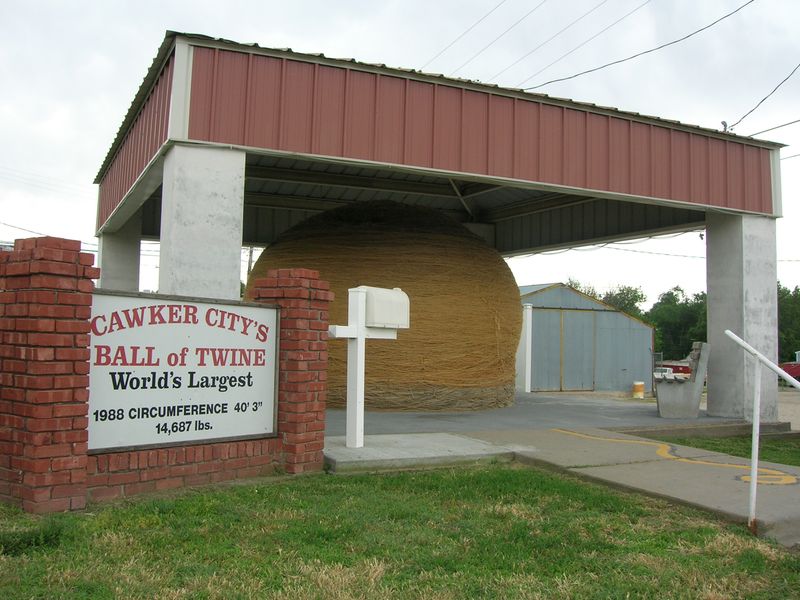
In 1953, Frank Stoeber began winding twine in his barn, never imagining his hobby would put Cawker City on the map. The sign marking his creation as the “World’s Largest Ball of Twine” has drawn curious travelers for decades.
What makes this attraction special is community involvement. Every August, residents gather for Twine-a-thon, adding more string to keep their record intact while competing with similar claims from other states.
The simple roadside sign represents small-town America’s ability to create tourist attractions from the most unexpected materials. This humble marker proves that with enough creativity and community spirit, any town can become a destination worth visiting and remembering.
12. Graceland Gates Sign – Memphis, Tennessee

Behind these famous gates lies the home of the King of Rock and Roll. The Graceland entrance sign has become a pilgrimage site for Elvis fans from around the world, marking the threshold to music history.
Elvis purchased the mansion in 1957, and it remained his private sanctuary until his death in 1977. The property opened for tours in 1982, with the entrance sign serving as the first glimpse into the star’s personal world.
Today, over 600,000 visitors annually pass beneath this iconic sign to explore Elvis’s home, cars, and final resting place. The simple marker has become a symbol of American music heritage and the enduring power of rock and roll culture.
13. Space Needle Sign – Seattle, Washington
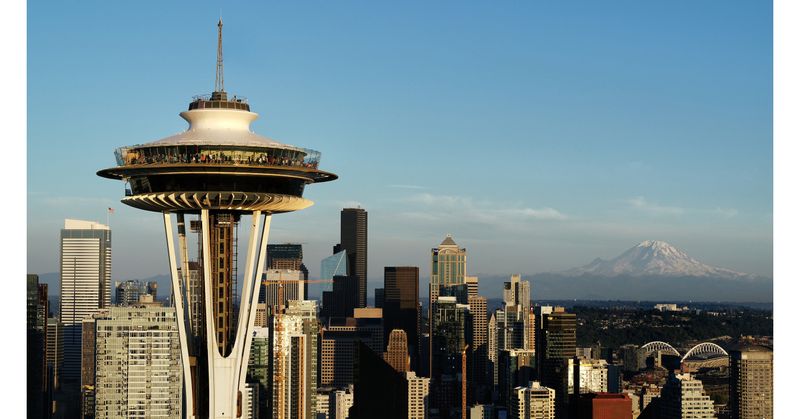
Built for the 1962 World’s Fair, Seattle’s Space Needle was designed to represent humanity’s space-age future. The tower’s distinctive signage and futuristic architecture made it an instant icon of the Pacific Northwest.
Standing 605 feet tall, the Space Needle’s observation deck offers panoramic views of Seattle, Mount Rainier, and Puget Sound. Directional signs throughout the city point visitors toward this beloved landmark.
The structure has appeared in countless movies and TV shows, cementing its status as Seattle’s most recognizable symbol. The Space Needle proves that bold architectural vision combined with effective signage can create lasting landmarks that define entire cities for generations.
14. Corn Palace Sign – Mitchell, South Dakota
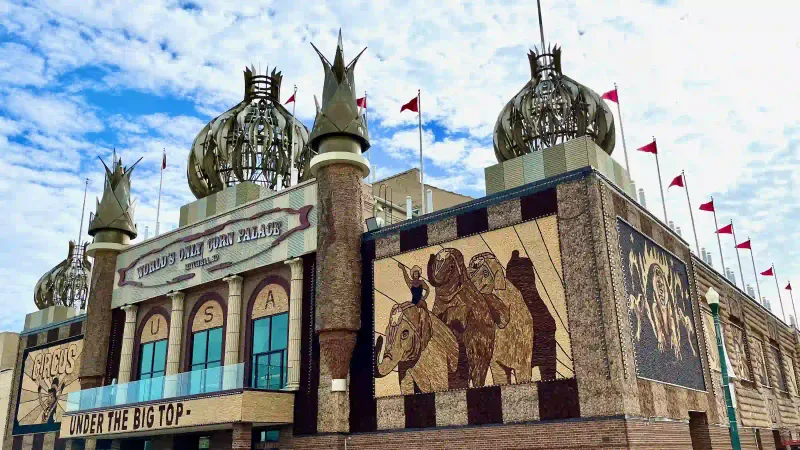
Since 1892, Mitchell’s Corn Palace has celebrated the agricultural abundance of South Dakota through an annual tradition of decorating an entire building with corn and other grains. The palace’s sign promises visitors a truly unique American experience.
Each year, local artists create new murals using thousands of bushels of corn, grain, and grass. The themes change annually, but the palace’s mission remains constant: showcasing the importance of agriculture in American life.
Over 500,000 visitors annually come to see this “World’s Only Corn Palace,” drawn by roadside signs that promise something they’ve never seen before. This agricultural attraction proves that creativity and community pride can turn any resource into a memorable destination.
15. Pony Express Trail Markers – Multiple Western States

Across the American West, bronze markers commemorate the legendary Pony Express mail service that operated for just 18 months in 1860-1861. These signs mark the route of young riders who carried mail 1,966 miles from Missouri to California.
Though the service lasted less than two years, the Pony Express became a symbol of American determination and frontier spirit. The trail markers help modern travelers follow the historic route through eight states.
Each sign tells part of the story of how communication connected the growing nation during its most challenging period. These markers transform ordinary highways into historic corridors, allowing travelers to experience the adventure and danger faced by America’s earliest mail carriers.
